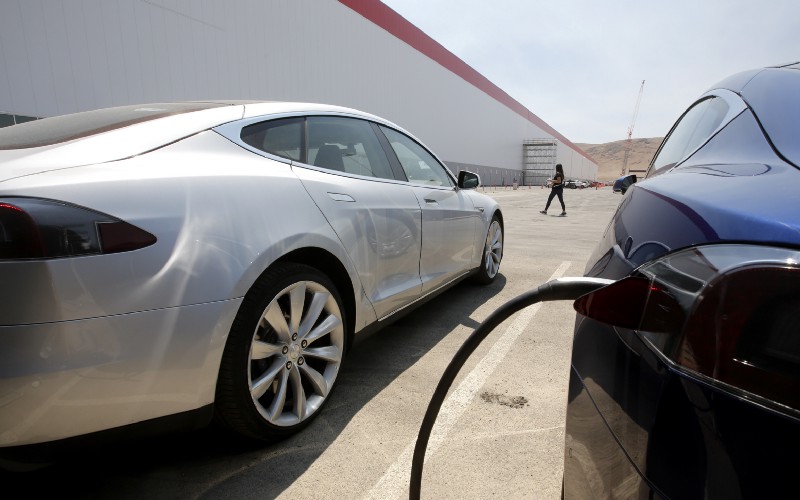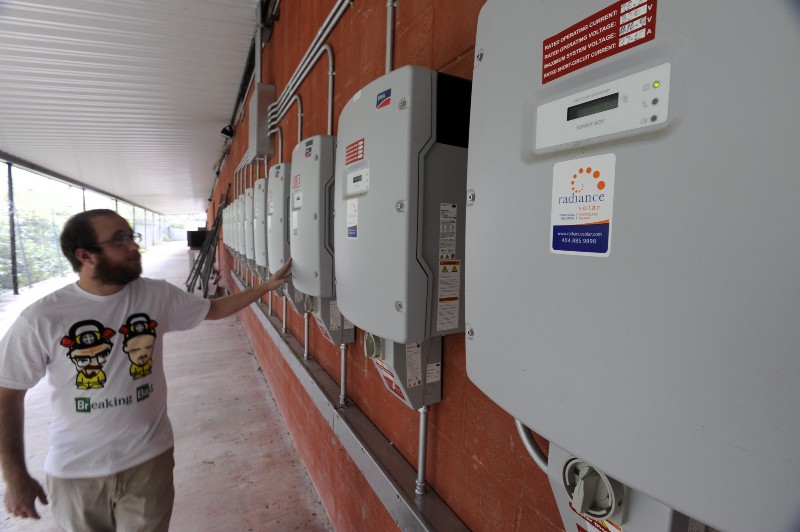Energy storage prices are falling rapidly, allowing new combinations of solar, wind, and energy storage to “outcompete” the costs of coal and natural gas plants, according to a new study.
Research and development investment for energy storage projects have brought the cost of a lithium-ion battery down from $10,000 per kilowatt-hour in the early 1990s to an expected $100 per kilowatt-hour in 2018, the researchers said. Residential solar and electric battery storage could become cost-competitive with grid electricity by 2020, they added.
“Dramatic cost declines in solar and wind technologies, and now energy storage, open the door to a reconceptualization of the roles of research and deployment of electricity production, transmission, and consumption that enable a clean energy transition,” the study says.
Furthermore, meeting the carbon emissions-reduction goals, as outlined in the Paris climate agreement, will require a greater focus on research and development, the study notes.
The new study, “Energy Storage Deployment and Innovation for the Clean Energy Transition,” was authored by researchers at the University of California, Berkeley, TU Munich, and the Center for Digital Technology Management in Germany and was published in the Monday issue of Nature Energy.
Wind turbines and solar panels generate power when the wind is blowing and the sun is shining. They work intermittently, unlike gas- and coal-fired power plants, which can generate steady power as needed to meet consumer demand.
Various systems exist to deal with intermittency, from installing a lot more wind and solar over a large geographical area to storing surplus energy until it is needed. A wide array of technologies are used for energy storage, including solid state batteries, flow batteries, flywheels, and compressed air. Gigawatt-scale grid storage would improve the transmission and distribution system, resulting in lower future investments necessary to ensure grid stability and improve customer, according to the study.
One of the barriers to lowering the cost of energy storage is that public research and development spending in energy has slowed down, even as reliable electric power delivery has become a higher priority. From 1976 to 2015, total U.S. federal research and development spending dropped from 1.2 percent to 0.8 percent of the U.S. GDP.
“We note that the relative decline in public R&D spending could forestall critical cost reduction and advances toward achieving a deep decarbonization in the electricity sector and bringing new material advances from the lab to the market,” the study says. “One way to drive this research is through government spending that could achieve drastic cost reductions for energy storage systems.”
The federal government provides seed money for energy technologies, including energy storage. In 2016, the Department of Energy’s Advanced Research Projects Agency-Energy (ARPA-E) was funding 75 battery system projects that the agency said have the potential to transform renewable energy storage in the next five to 10 years.
However, the House passed a so-called minibus spending bill last week that eliminates funding for ARPA-E, which would end agency’s research into battery projects. President Donald Trump also called for the elimination of ARPA-E in his proposed fiscal-year 2018 budget.
The potential for drastic cuts to federal research and development of energy storage technology, as proposed by the Trump administration, “would certainly be a short-term blow” to innovation, Daniel Kammen, a professor at the University of California, Berkeley and director of its Renewable and Appropriate Energy Laboratory, said in an email to ThinkProgress.
Kammen, who was one of the three co-authors of the energy storage study, argued that dramatic funding downturns limit the competition between different competing technologies.
“We saw a great increase in positive competition under the Obama-era ARPA-E program, when many candidate technologies competed for recognition and support,” he said. “Now, if the Trump cuts do take place, this will not only cause a short-term tightening, but can also cut into this ‘diversity-competition’ which is so important over the long-run.”
Tesla has been one of the leaders in energy storage innovation, with its Gigafactory in Nevada and a lithium-ion storage facility in southern Australia. Deepwater Wind, a wind energy development company, on Tuesday announced a proposed a 144-megawatt wind farm with 40-megawatt hours of battery storage provided by Tesla for its offshore Massachusetts project.
California is home to the first energy storage mandate on the grid, requiring utilities to procure 1,325 megawatts of storage by 2020. In Europe, the city of Berlin, Germany, plans to install a 120-megawatt battery underground to support wind and solar efforts at prices as low at 15 cents per kilowatt-hour.
“These innovative policies showcase the range of storage options that may benefit clean energy, from small Powerwall batteries in the home to city-scale storage facilities providing back-up to utility-scale wind and solar farms,” the study says.


